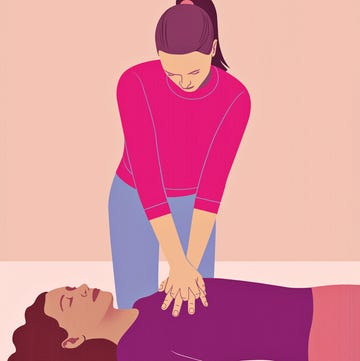Macy Owen was finishing her degree at the University of Tennessee Medical Center in Knoxville when her symptoms—namely, crushing fatigue—first surfaced.
“I developed a newfound ability to fall asleep at any time of the day, in any position,” says Owen, now 27. “My one symptom that couldn’t be attributed to exhaustion was a feeling I can only describe as hot matches burning me from the inside between every joint in my hands, fingers, and wrists. When it began to interfere with my sleep and work, I decided to see a physician.”
The diagnosis: rheumatoid arthritis (RA), an autoimmune disease that wreaks havoc on the joints, as well as other parts of the body, leading to symptoms like achy or locked joints, numb hands, and problems with the eyes and feet.
Growing up, Owen had watched her mother deal with RA, so she knew there were plenty of lifestyle changes she could make to help relieve her symptoms in addition to medical treatments she might choose to explore.
“You can either be on top of it, or it can be on top of you,” says Owen. “If I choose to let it get the best of me and focus on the pain, it gets me nowhere. I have to ignore it and push forward.”
In the four years since her diagnosis, that’s exactly what she’s done. Here are her tips for living with RA, not in spite of it.
1. Avoid trigger foods
Before she was diagnosed with RA, Owen says she ate “like an unsupervised kindergartener.” She has since learned how the foods she eats impact how she feels—namely how certain foods increase inflammation, which triggers flares. She found books about cleansing diets to help her come up with a regimen that works for her, and today she consumes a low-carb diet that includes little to no sugar, gluten, and dairy. “Simple switches like almond milk for cows’ milk and full sugar to reduced sugar have made all the difference in the world,” she says.
Changing the way she eats hasn’t always been easy. A “chicken tenders and French fries gal through and through,” she has had to get creative about sneaking in a serving of fruits and veggies with every meal. Smoothies have become a favorite vehicle for leafy greens. And of course, Owen still indulges in the occasional blended coffee drink or order of fries—on special occasions.
2. Keep exercise on your to-do list.
Physical activity is good for everybody. For people with RA, it’s essential. “If you don’t incorporate movement in your daily routine, the pain is worse,” says Owen.
To stay motivated, she recommends three tricks: “Make it fun; remind yourself why you do it and how it helps you; and have the mindset that you are exercising not because you have to, but because you get to,” she says.
To keep from getting bored, Owen mixes it up. She focuses on low-impact exercises like yoga, Pilates, and cycling (she recently invested in a stationary bike to spin at home) and skips treadmill runs and HIIT workouts that are too tough on the joints.
“When I have those inevitable days where I would rather have a root canal than exercise, I remind myself what working out does for me,” she says. “I’ve become dependent on the boost of energy it gives me to get through my workday.”
3. Get plenty of sleep
Owen is something of a recovering night owl—pre-diagnosis, she would routinely sleep in until noon. These days, though, Owen says she is in bed by 9:00 pm and wakes up at 4:30 am. She has found that getting adequate rest has helped speed recovery, ease the pain, and improve her mood.
How has she managed to build new, healthier sleep habits? “Putting down electronics and turning off the TV at least one hour before your head hits the pillow helps,” she says. “I read right before bed. It calms me down and puts my mind at ease, making for a deep, more restful sleep.”
4. Be kind to yourself
As a radiologic technologist, Owen spends hours every day on her feet, often carrying a 20-pound x-ray protection apron. “When I get home, I feel the day hit me hard,” she says. To treat the pain—and deliver much-needed TLC—Owen takes a hot bath with candles and bath bombs, followed by a healthy application of a soothing, aromatic pain relief balm. “Putting yourself first and treating yourself with grace and kindness is imperative,” she says.













